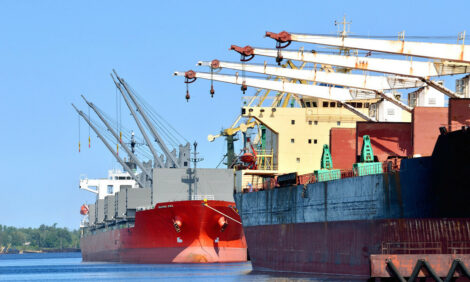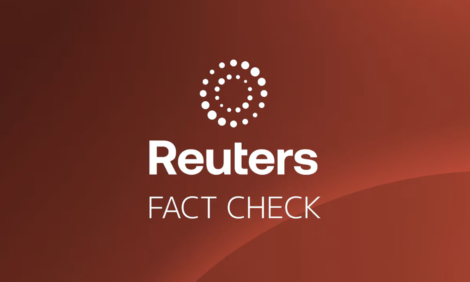



EuroTier 2024: Trends in livestock technology
EuroTier takes place November 12-15 in Hanover, GermanyEuroTier is the world's leading platform for innovations in all areas of animal farming. This is qualitatively reflected in the innovations submitted, which were comprehensively evaluated by the DLG Innovation Commission, composed of international experts, according to a recent press release from the trade fair's organisers, the DLG. The innovations registered for EuroTier 2024 reflect the entire spectrum of the agricultural sector. The innovative power is clearly recognisable.
AI in livestock farming
Artificial intelligence is a decisive factor when it comes to future developments in the field of agricultural livestock farming. However, it is very important to distinguish clearly between products that only state that they contain AI and those that actually contain it in a form that can be applied by farmers. In the field of AI image analysis, cameras in the animal housing alone can be used for animal identification, tracking the movements of animals through the housing barn, or detecting lameness, oestrus or birth. However, the decisive factor here is how well the corresponding models are trained and whether they are suitable for farmers' own operations. Just as we can tell the difference between Holstein Friesian and Fleckvieh cows, the AI models can also distinguish between them. Overall, however, the new approaches to image analysis, either alone in the barn or in data communication with sensors in the barn, offer new approaches to animal analysis. Image analysis offers new possibilities, particularly for farm animals, where it is not economically viable to attach sensors directly to the animal on a large scale.
Cross-linking of various data sources necessary
Other possibilities for AI in agriculture include the use of Large Language Models for accessing data from herd management programs in normal speech and to have it processed accordingly and then output via speech. Intensive use of AI naturally requires cross-linking of various data sources. In many areas of livestock farming, it is still the case that there is no BUS system in animal farming that enables the shared exchange of data. This hinders many different developments.
Animal welfare: Innovations in the context of conflicting political framework conditions
Two central goals in animal farming remain the improvement of animal health and animal welfare. Animal welfare is recognised as a very important area by manufacturers and farmers. However, a certain reluctance can be observed when it comes to developing new systems, as it is impossible to predict what political and social demands will be made in the future. For a long time, the focus of livestock farmers has also been on improving animal health through animal observation and the early detection of diseases. Reducing the use of antibiotics is also an important point in this context.
Robotics on the rise internationally
The use of robots is increasing in all areas of livestock farming in Europe and is being further intensified by AI. One of the main aspects here is the use of robots to reduce the workload of humans, thereby addressing the problem of physical and mental fatigue in humans, which can also lead to mistakes in animal farming. At the same time, this can help to compensate for a lack of personnel. An increase in work efficiency and quality can also be observed.
Improvement of emission situation from barns
One goal that is traditionally pursued intensively in feeding is to minimise the emission of environmentally relevant substances such as nitrogen and phosphorus. In addition to classic approaches such as optimising the amino acid composition of the ration, using suitable enzyme supplements or employing efficient probiotics, ration components with particularly high availability or digestibility, for example, could make an important contribution in the future. At the latest since the last decade, the minimisation of the emission of greenhouse gases such as methane must also be considered when thinking about "environmentally relevant excrement" in cattle feeding. The field of activity that has emerged here in recent years continues to develop steadily. In the field of methane-reducing additives, further products appear to be reaching market maturity. In pig farming, on the other hand, more attention is being paid to the exercise areas. To keep them clean, concepts are needed in which robots collect faeces, manure and slurry promptly and cleanly. In combination with the right walking surfaces, which guarantee rapid urine drainage, essential goals are achieved: Not only are emissions reduced, but hoof health is also maintained due to the dry walking surfaces, and working conditions are more pleasant due to the clean walking surfaces.
Improvement of barn climate
Climate change and the associated rise in temperatures are also noticeable in the barns. The goal here is to reduce the burden on humans and animals. Thanks to modern technology, both the animals and the livestock farmers are less stressed today. Thanks to increasing digitalisation, potential problems, such as a defective spray cooling system, are also being detected more effectively. Another point is the reduction of the ammonia content in the air of pigsties. Monitoring the climate in the stalls with digital ammonia sensors improves the air quality in the stalls and appropriate measures are initiated when the limit values for ammonia are exceeded.
Technological trends in pig farming
Numerous developments and improvements in existing husbandry and feeding technology, as well as new and innovative developments, and many small, well-designed details in accessories and equipment, are designed to ensure successful production in pig farming. In order to achieve the necessary cost leadership in pig farming, knowledge of the actual production process is an essential prerequisite for successful work. The data networking of the various technologies installed in the barn is therefore being further advanced – from climate control to feeding technology and optimised sales management. In terms of farming technology, automated bedding systems are being further developed, while other developments should help to prevent caudophagy problems and reduce ammonia levels in the air inside the barn. The nutritional condition of the sows is an important factor for the economic success of a piglet producer. In this case, advanced systems for automated condition assessment can enable customised feeding. The goal is to improve the well-being of sows and reduce piglet losses by further developing the floor surfaces of farrowing pens and evolving exercise and free-range pens. There have also been developments in the area of feeding technology, such as in dry feeding and portion feeding systems, as well as in feeding systems for suckling piglets, where these are designed to ensure improved hygiene.
Technological trends in cattle farming
The requirements for future-orientated milk production and beef and dairy farming in Germany continue to increase. The balancing act of safeguarding the economy and meeting political and social demands for new animal welfare standards is one that must be mastered. In the context of social aspects, particular attention must be paid to the working and living conditions in agriculture. In the field of animal housing concepts, smart construction is emerging as a way of sustainably supporting animal-friendly husbandry conditions and optimised environmental impacts. This is achieved through the interplay of intelligent barn construction concepts in combination with innovative technologies, particularly in the areas of automation and digitalisation. Intelligent technologies in conjunction with consistent, preventive management will significantly reduce the burden on people and lead to a new assessment of the quality of work. New husbandry concepts are being discussed in calf rearing. Closed barns with flexible boxes and pen partitions for single, double and group housing offer new opportunities for greater animal welfare, efficiency and also acceptance by consumers and politicians. In the field of automation, automatic feeding will become more of a focus, as it has a great deal of potential. Sensor technology, especially in the area of intelligent, camera-based animal monitoring, and the resulting possibilities, offer further options for herd management that can be used to optimise quality milk production.
Technological trends in poultry farming
As in previous years, poultry farmers are currently facing a number of challenges. These include, in particular, a further improvement in animal welfare and animal health, as demanded by politicians and society. Optimising vaccination success while also improving animal handling is an important prerequisite for a long lifespan and for avoiding vaccination damage. New vaccination methods represent a significant advancement in the field of poultry vaccination and offer major improvements with regard to function and procedure. Innovative solutions for combating the red mite, disinfecting hatching eggs and cleaning rearing and laying hen coops and aviary systems can also make a significant contribution to animal health. An improved rearing aviary and the combination of a laying aviary with a rearing aviary can ensure greater animal welfare for laying hens. The welfare of the chicks is also considered. For example, a larvae snack bar is designed to keep the animals occupied while providing them with high-quality protein.
"Clever & Smart" – little helpers in the barn
Digital systems are increasingly finding their way into cattle, pig and poultry barns. They provide farmers with smart decision-making aids and help to further optimise work processes, produce more economically, promote animal welfare and reduce the workload on farms. Current developments in digital solutions show interesting perspectives for livestock farmers and provide them with practical benefits in important areas. Recognisable trends are clearly moving in the direction of health monitoring, support for greater animal welfare and the use of AI in animal farming. In addition to individual animal-related sensor systems, a trend towards camera-based systems is slowly becoming recognisable.



